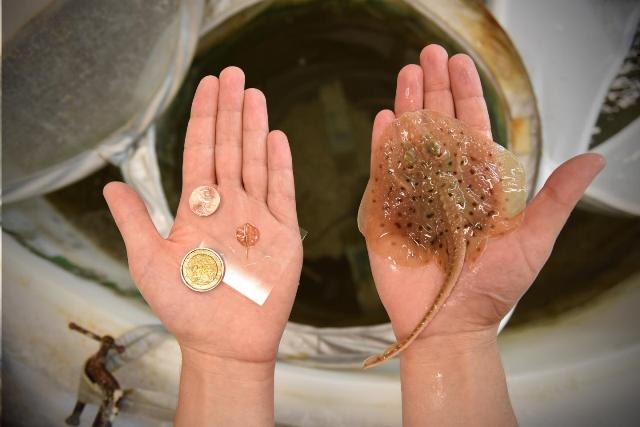Jul 8 2016
Researchers have created a robotic mimic of a stingray that's powered and guided by light-sensitive rat heart cells. The work exhibits a new method for building bio-inspired robots by means of tissue engineering.
 This is a tissue-engineered soft-robotic ray and a little skate, Leucoraja erinacea. This material relates to a paper that appeared in the July 8, 2016 issue of Science, published by AAAS. The paper, by author at institution in location, and colleagues was titled, "Phototactic guidance of a tissue-engineered soft-robotic ray." (CREDIT: Karaghen Hudson)
This is a tissue-engineered soft-robotic ray and a little skate, Leucoraja erinacea. This material relates to a paper that appeared in the July 8, 2016 issue of Science, published by AAAS. The paper, by author at institution in location, and colleagues was titled, "Phototactic guidance of a tissue-engineered soft-robotic ray." (CREDIT: Karaghen Hudson)
Batoid fish, which include stingrays, are distinguished by their flat bodies and long, wing-like fins that extend from their heads. These fins move in energy-efficient waves that emulate from the front of the fin to the back, allowing batoids to glide gracefully through water. Inspired by this design, Sung-Jin Park et al. endeavored to build a miniature, soft tissue robot with similar qualities and efficiency. They created neutrally charged gold skeletons that mimic the stingray's shape, which were overlaid with a thin layer of stretchy polymer. Along the top of the robotic ray, the researchers strategically aligned rat cardiomyocytes (muscle cells). The cardiomyocytes, when stimulated, contract the fins downward. Since stimulating the fins to turn in an upward motion would require a second layer of cardiomyocytes, the researchers instead designed the gold skeleton in a shape that stores some downward energy, which is later released as the cells relax, allowing the fins to rise. So that the researchers can control the robot's movement using pulses of light, the cardiomyoctyes were genetically engineered to respond to light cues. Asymmetrical pulses of light can be used to turn the robot to the left or right, the researchers showed, and different frequencies of light can be used to control its speed, as demonstrated in a series of videos. The method works well enough to guide the robot through a basic obstacle course. The robotic stingray, containing roughly 200,000 cardiomyocytes, is 16 millimeters long and weighs just 10 grams.